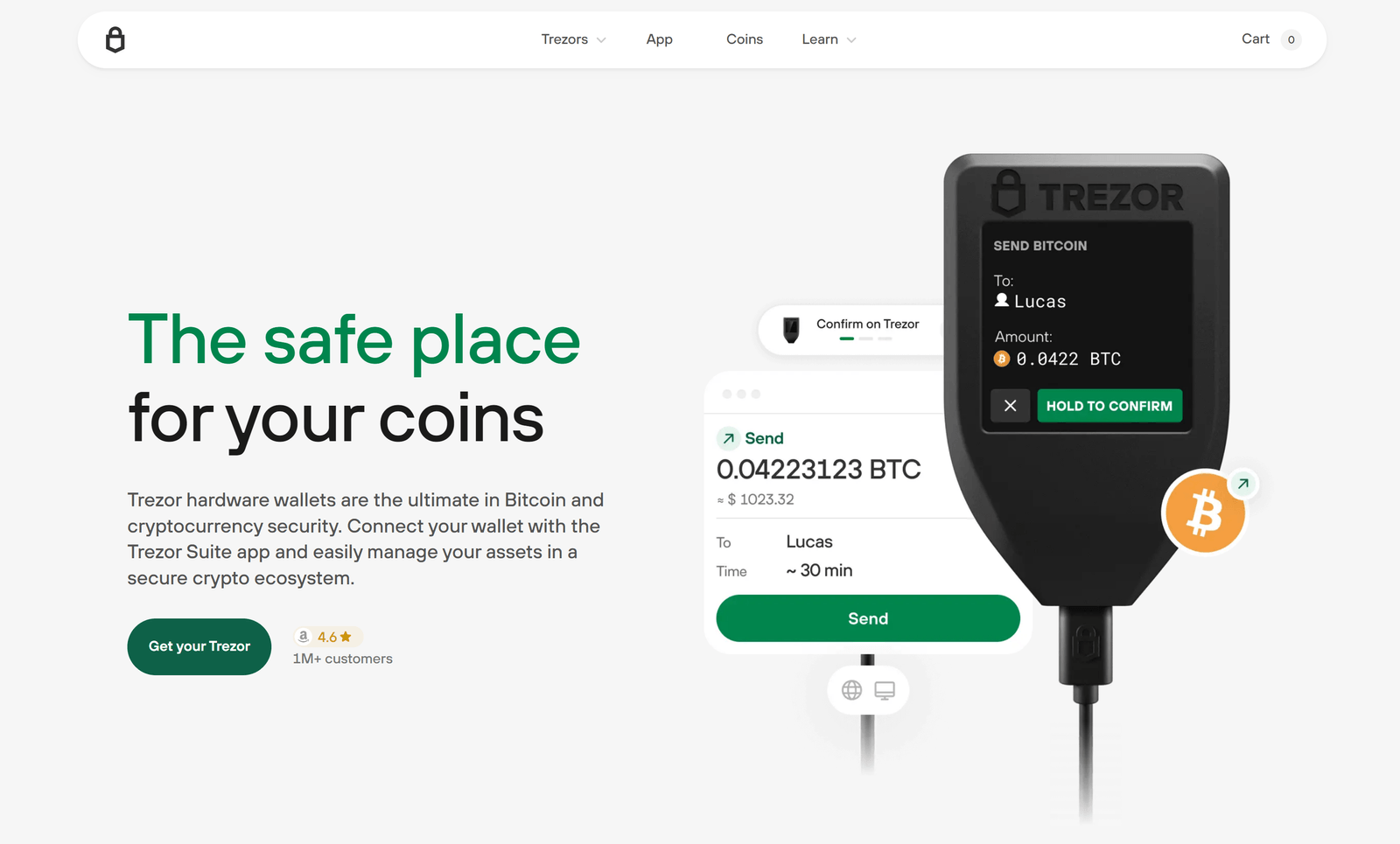
How to Get Started with Trezor.io/start for Maximum Crypto Security
When people hear about Trezor.io/start, they often wonder what it is and why it’s so important. The truth is, Trezor.io/start is the official onboarding hub for Trezor hardware wallets, guiding you through secure setup, firmware verification, and wallet initialization. In this introduction, I’ll show you how Trezor.io/start works, why it matters, and what you’ll gain by following it as your primary resource.
Why Trezor.io/start Is Essential for Crypto Users
Using Trezor.io/start ensures you’re accessing the authentic and safe setup process for your hardware wallet. Unlike random blogs or videos, Trezor.io/start keeps your crypto journey aligned with Trezor’s official instructions. Whether you’re setting up Bitcoin, Ethereum, or stablecoins, Trezor.io/start reduces the chance of mistakes, scams, or outdated firmware.
What Happens Inside Trezor.io/start
When you open Trezor.io/start, you’re guided through a secure flow: downloading Trezor Suite, plugging in your device, initializing with a PIN, generating a recovery seed, and checking for firmware authenticity. With Trezor.io/start, cryptographic checks confirm your device hasn’t been tampered with, and you get peace of mind knowing your private keys remain offline.
Step-By-Step Guide Through Trezor.io/start
To simplify the journey, Trezor.io/start breaks down the process into clear steps that even first-time users can handle. Here’s the sequence you’ll typically follow via Trezor.io/start:
- Go directly to Trezor.io/start by typing the address manually—never click suspicious links.
- From Trezor.io/start, download the official Trezor Suite for Windows, macOS, or Linux.
- Connect your Trezor device and follow prompts at Trezor.io/start to update or install firmware.
- Set up a secure PIN using the on-device screen as guided by Trezor.io/start.
- Write down your recovery seed carefully when instructed by Trezor.io/start—never store it digitally.
- Finish configuration, then use Trezor Suite to send, receive, and manage assets with guidance from Trezor.io/start.
This numbered flow demonstrates why Trezor.io/start is the single most trusted guide for device setup and wallet security.
Troubleshooting with Trezor.io/start
Sometimes, users face issues while working through Trezor.io/start, such as their device not being recognized or firmware failing to load. In most cases, Trezor.io/start suggests checking cables, ports, or running updates in Trezor Suite. If problems persist, Trezor.io/start links you to official support, avoiding the risk of fake solutions from unverified forums.
How Trezor.io/start Guards Against Phishing
A huge benefit of Trezor.io/start is that it minimizes phishing attacks. By only entering through Trezor.io/start, you confirm you’re working with the official site. Trezor.io/start also uses HTTPS encryption, authentic firmware checks, and device verification to prevent compromised setups that put private keys at risk.
Comparing Trezor.io/start to Third-Party Guides
While plenty of tutorials exist online, none match the accuracy of Trezor.io/start. Third-party resources often lag behind new firmware releases or UI changes. In contrast, Trezor.io/start is continuously updated by Trezor developers, making it the authoritative path to avoid errors and security gaps.
Advanced Uses of Trezor.io/start
Once familiar, Trezor.io/start isn’t just for first-time setup. You can revisit Trezor.io/start to reset your device, reinstall firmware, or add support for new blockchain networks. Advanced users often return to Trezor.io/start when expanding their portfolio or integrating with DeFi platforms, ensuring configurations stay verified and secure.
Security Best Practices Around Trezor.io/start
When working with Trezor.io/start, always follow basic crypto hygiene: never enter your recovery phrase online, never share screenshots of your PIN setup, and only download files via Trezor.io/start. Remember that Trezor.io/start is your anchor point; if anything feels suspicious, return there for the official reset and verification flow.
Integrating Trezor.io/start with Your Crypto Lifestyle
After the first setup, Trezor.io/start remains a valuable tool. Whether staking coins, connecting to MetaMask, or accessing dApps, you’ll often revisit Trezor.io/start to confirm updates, add coin support, or troubleshoot. By making Trezor.io/start part of your ongoing workflow, you ensure security evolves with your portfolio.
Conclusion: Trezor.io/start as Your Crypto Foundation
In conclusion, Trezor.io/start isn’t just a website—it’s your trusted entry point to the crypto world. Every step you take through Trezor.io/start reinforces your security, eliminates phishing threats, and builds confidence in managing digital assets. If you’re serious about safeguarding Bitcoin, Ethereum, or DeFi tokens, Trezor.io/start should always be your first and last stop for setup, verification, and peace of mind.